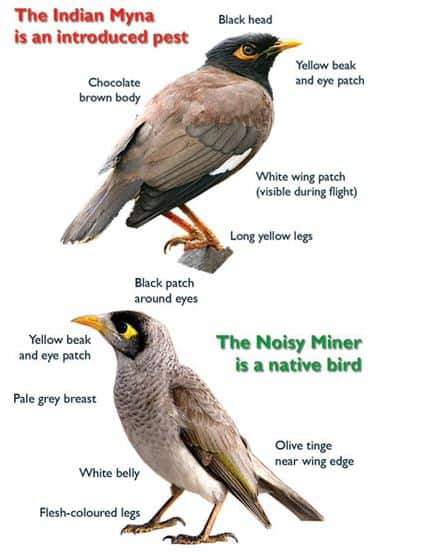
The Indian Myna Acridotheres tristis (also known as the Common Myna) was introduced into Australia in the late 1860s to control insects but has since become a huge problem in cities and urban centres along the Eastern seaboard. Indian Mynas compete for nesting hollows with native birds, destroying their eggs and chicks and interrupting natural breeding. They will also evict small mammals from their hollows leaving them potentially unusable due to their messy nesting habits. The Indian Myna is listed by the World Conservation Union (IUCN) as one of the worlds top 100 most invasive species, of which only 3 are birds.
Indian Mynas can pose a threat to human health, especially if they nest in your roof where they can start a bird mite infestation in your house, which is highly unpleasant and can last up to 3 weeks.

There are many things that individuals can do to reduce the numbers.
These include:
Resources
Home › Invasive species › Indian Myna